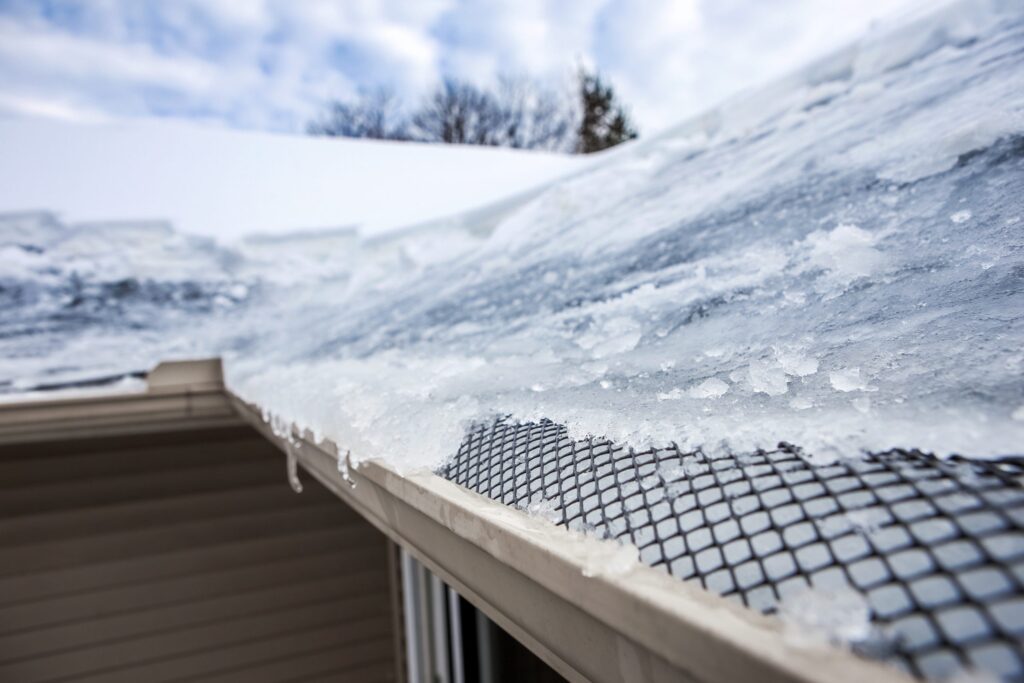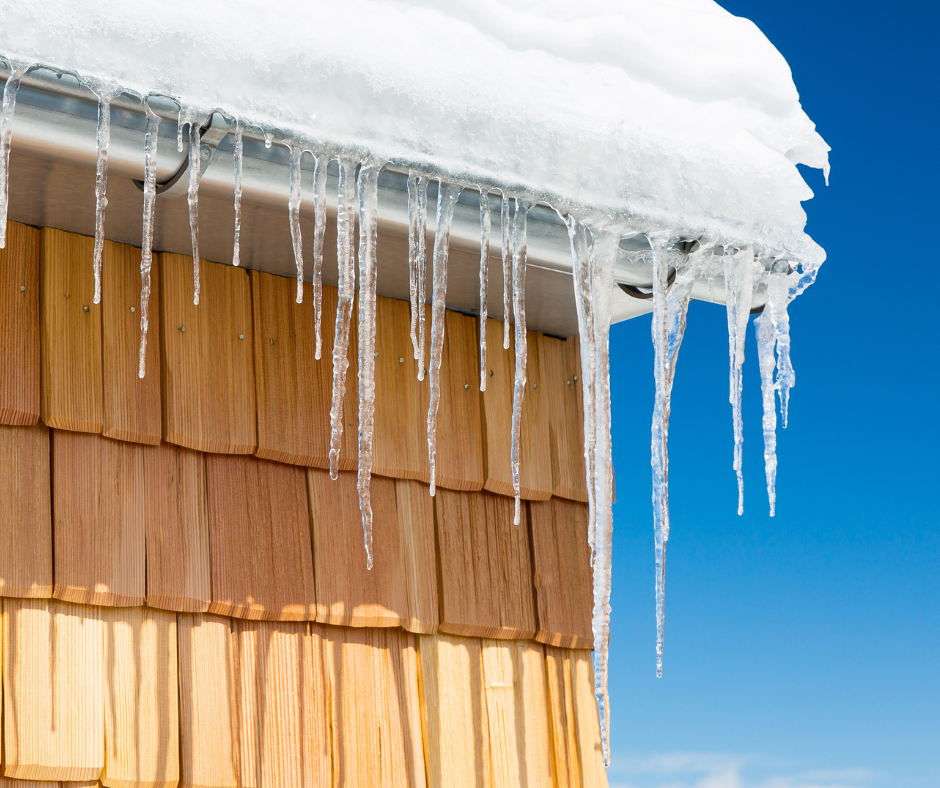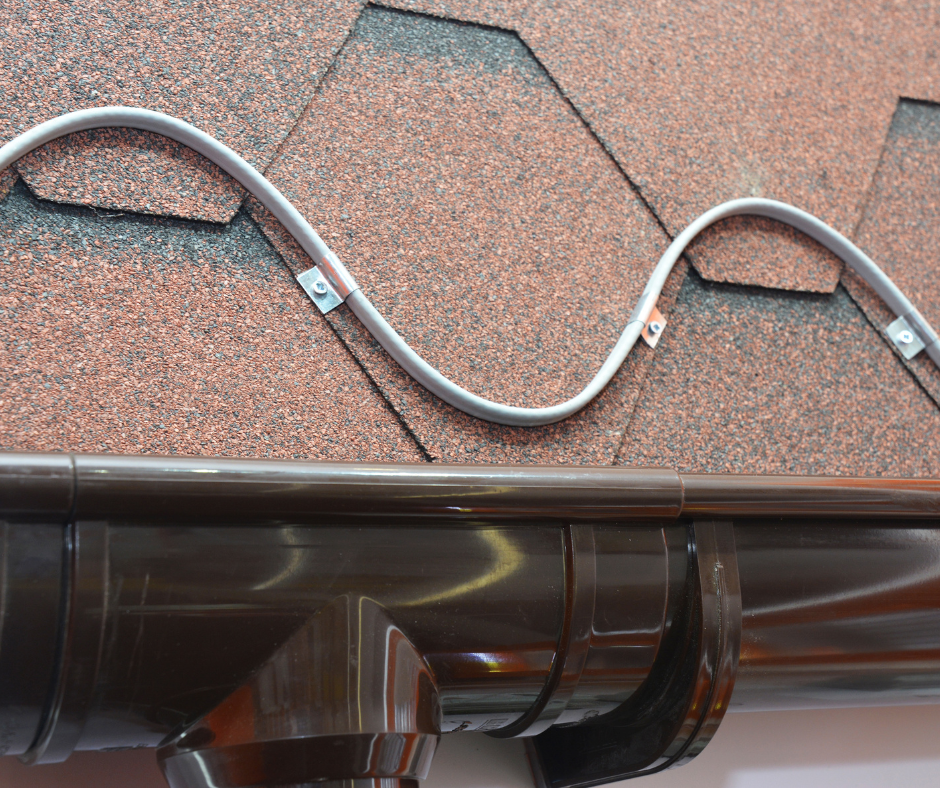Ice Dams: How to Prevent and Protect Your Roof and Home
While snow-capped roofs create picturesque winter scenes, they can also harbor a hidden threat: ice dams.
Ice dams form when melted snow refreezes at the edges of a roof, creating a barrier that prevents proper drainage. Left unchecked, ice dams can lead to water damage, structural issues, and costly repairs.
Rescue My Roof has been a leader in the roofing industry for over a decade, helping homeowners keep their roofs in top-condition. Today, we’re going to help you against one of winter’s greatest challenges: ice dams.
In this article, we’ll delve into the problems associated with ice dams and explore strategies for prevention and mitigation. Ultimately, you’ll know how to protect your roof against ice dams.
What Are Ice Dams?

An ice dam forms when snow and ice freeze down by your gutters and create a blockage. Unfortunately, when the snow at the peak of your roof melts, the ice dam blocks it from properly draining into your gutters.
Your roof is not meant to hold standing water. So when the ice dam has led to a mini-lake on your roof, the water will eventually find a way to seal into your home.
The results: rotten decking, mold growth in the attic, and interior drywall damage. Yikes, those all sound like a complicated fix.
Ice dams are likely to occur around your gutters and valleys. If your roof begins to leak in the winter in these areas, it is likely the result of ice dams.
The Top 5 Problems Caused by Ice Dams
Ice dams may seem harmless, but if left untreated, they can cause serious home damage.
Here are the top 5 problems caused by ice dams:
1. Roof Damage
The weight of ice dams and trapped water can exert significant pressure on the roof structure, leading to shingle damage, roof deck distortion, and even roof collapse in extreme cases.

The initial damage will begin when the ice begins to creep underneath the shingles, prying them up and allowing water to seep through. Over time, the water damage will rot out the decking, leading to extreme leaks and potential interior damage.
If ice dams run rampant every winter for years, your roof’s structural integrity will be compromised. You may begin to see roof sagging and mold growth in the attic space.
In extreme cases, ice dams and the following water damage can lead to broken rafters or roof collapse. If there is too much weight on your roof, the wooden supports in your roof (the rafters) can snap under the weight.
Depending on the age of your home, you may be more at risk for broken rafters. The construction standards have changed in recent years. Newer homes now require rafters that are closer together and can bear more weight.
Older homes are at a higher risk because the wood is older, and the rafters are more likely to be farther apart. This decreases the amount of weight your roof can handle.
That is why it is essential to invest in ice dam removal and preventative measures. By using maintenance tools like a roof rake or even heating cables, you are saving yourself thousands in repair costs.
2. Water Leakage
As water backs up behind the dam, it can find its way under shingles and into the attic or interior spaces, causing ceiling stains, peeling paint, and water damage to walls and insulation.
Ice dams can lead to roof leaks regardless of your roof’s age – but it is 100% preventable. If your home is susceptible to ice dams, invest in heat cables, roof rakes, or ice dam remediation services to protect against roof leaks.
3. Mold and Mildew Growth
Moisture from ice dams creates ideal conditions for mold and mildew growth in attics and wall cavities, posing health risks to occupants and compromising indoor air quality.
Trying to stop mold growth once it starts is a difficult – and often expensive – process. That is why preventative measures like proper ventilation and protecting against roof leaks is essential.
If you’re starting to see ice dam build-up, it’s time to take remediation seriously.
4. Insulation Damage
Water infiltration can saturate insulation materials, reducing their effectiveness and leading to energy loss and increased heating costs.
Insulation can be costly to replace. And once it’s damaged, it can leave your home (and wallet) at risk. Overall, the best course of action is to get ahead of the damage ice dams cause to avoid these costly repairs.
5. Gutter Damage
Ice dams can damage gutters and downspouts as they expand and contract with freezing and thawing cycles, leading to sagging, detachment, or damage to gutter fasteners.
Ice dams can also damage gutters and downspouts, causing them to sag, pull away from the roof, or even detach entirely. This not only compromises the functionality of the drainage system but can also pose a safety hazard to occupants and passersby.
To protect your entire roofing system, use heating cables, roof rakes, or even professional snow removal services to remove excess snow and ice.
Ice Dam Prevention and Mitigation Strategies
Now you know the risks associated with ice dams – how do you prevent them?
Before winter starts, you can take preventative measures to protect against ice dam build-up. However, if you’re already seeing the signs of ice dams forming on your roof, it’s time to break out the big guns.
Here are some prevention and mitigation strategies to protect your home against ice dams:
1. Insulation and Ventilation
Roofing ventilation is essential for several reasons, but the one we are focusing on today is that it can help with ice dams.
Roof ventilation keeps the air circulating throughout your attic. As a result, your roof will stay at a consistent temperature. Without proper ventilation, the peak of your roof will be much warmer than the eaves, encouraging snow to melt.
The eaves of your roof (the area by your gutters) will be much colder than the peak, allowing the water to refreeze. This is where ice damming begins.
Ventilation provides a consistent roof temperature that will decrease the likelihood of severe ice damming.
2. Roof Heating Cables

Heating cables are a good option for minimizing ice dams if you notice they are beginning to build up.
Heat cables are plugged into an energy source and then attached to the roof. The cables heat up and melt the surrounding ice and snow.
This method of ice dam remediation does have some drawbacks. Heating cables are not pleasing to the eye and may detract from curb appeal. Additionally, you may see a slight increase in your energy bills.
However, if you want a low-maintenance option for dealing with ice dams, this method may be for you.
3. Roof Raking
Regularly removing snow from the roof with a roof rake can help prevent the buildup of snow and ice that leads to ice dam formation.
Roof rakes look like a shovel with a very long handle so that you can reach the very peak of your roof. Using the head of it, you can gently scrape the snow off of your roof.
Snow build-up on your roof will eventually melt. And if the temperatures are still cold enough, it will freeze near your gutters and cause ice dams.
Keeping the snow on your roof to one to two inches will minimize the chance of ice dams.
Are you looking for the perfect roof rake to help manage ice dams? We recommend finding one with wheels, so the roof’s shingles are not damaged. You can find one here.
4. Professional Roof Inspection
A professional roof inspection can lead to a roofing contractor recommending professional ice dam removal. Contractors use a steam machine – the only safe ice dam removal option – to melt snow off your roof without damaging the shingles.
While it may be more expensive to pay a professional than trying to DIY it, you will see better results and know that your roof is in good hands.
Conquering Ice Dams – Protecting Your Roof and Home
Ice dams pose significant risks to the integrity of your roof and the safety and comfort of your home. By understanding the problems associated with ice dams and implementing proactive prevention and mitigation strategies, homeowners can protect their roofs and minimize the risk of water damage and structural issues caused by these frosty foes.
Stay vigilant, stay prepared, and safeguard your home against the hazards of ice dams this winter season.
You can learn more about ice dams with “Ice Dam Removal Face Off: Chisels vs. Steamers” and “Ice Dam Removal Pricing (5 Factors Impacting Price).”
Are you looking for roofing services in southeastern Wisconsin? Rescue My Roof can help with all your roofing needs. Contact us today to get a free estimate.


